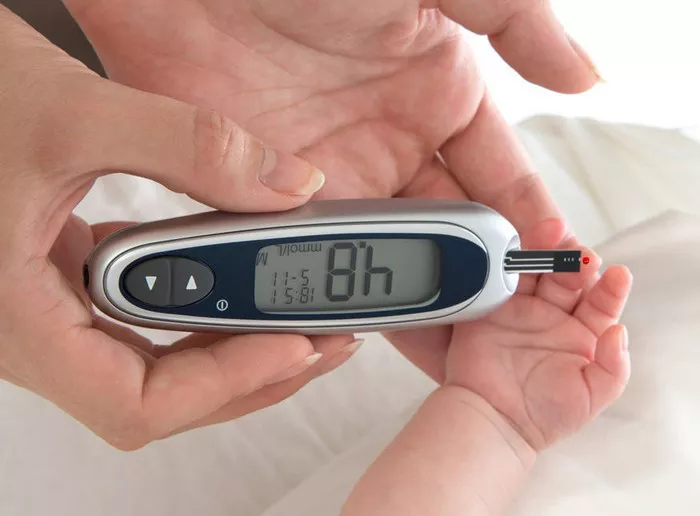In the realm of diabetes management, insulin serves as a cornerstone therapy for individuals striving to regulate their blood glucose levels effectively. Among the plethora of insulin options available, Humalog and Humulin stand out as two distinct brands, each offering unique formulations tailored to meet the diverse needs of people with diabetes. While both Humalog and Humulin share similarities in being manufactured by Eli Lilly and Company and serving as vital components of insulin therapy, they exhibit differences in their formulations, onset of action, duration, and pharmacokinetic profiles. This article aims to delve deep into the intricacies of Humalog and Humulin, elucidating their disparities to aid healthcare professionals and patients in making informed decisions regarding diabetes management.
Understanding Insulin Therapy: A Cornerstone in Diabetes Management
Before delving into the specifics of Humalog and Humulin, it’s imperative to comprehend the critical role insulin plays in diabetes management. Insulin, a hormone produced by the pancreas, facilitates the uptake of glucose from the bloodstream into cells, where it is utilized for energy production or stored for future use. In individuals with diabetes, the body either produces insufficient insulin (as in type 1 diabetes) or becomes resistant to the effects of insulin (as in type 2 diabetes), resulting in elevated blood glucose levels and metabolic disturbances.
To address these deficiencies, exogenous insulin therapy is often prescribed to supplement or replace the body’s natural insulin production. Insulin therapy aims to mimic the physiological pattern of insulin secretion, providing both basal (background) and bolus (mealtime) insulin coverage to maintain stable blood glucose levels throughout the day.
Humalog: A Rapid-Acting Insulin Analogue
Humalog, manufactured by Eli Lilly and Company, is a widely used brand of rapid-acting insulin analogue designed to mimic the rapid onset and short duration of action of endogenous insulin secretion. Unlike regular human insulin, which has a delayed onset and prolonged duration, Humalog offers more rapid absorption and onset of action, making it particularly suitable for controlling postprandial glucose excursions.
The key characteristics of Humalog include:
1. Onset of Action: Humalog has a rapid onset of action, typically within 15 minutes of subcutaneous administration. This rapid onset allows for more precise timing of insulin delivery with meals, helping to control postprandial glucose spikes effectively.
2. Peak Effect: Humalog reaches its peak effect within 30 to 90 minutes after administration. This rapid peak allows for timely glucose uptake and utilization, minimizing the risk of hyperglycemia following meals.
3. Duration of Action: The duration of action of Humalog ranges from 3 to 5 hours, making it well-suited for covering mealtime insulin needs and managing postprandial glucose fluctuations.
4. Administration: Humalog is available in various formulations, including vials, prefilled pens, and cartridges for use with insulin pumps. These delivery options offer flexibility and convenience for individuals with diabetes.
Humulin: A Human Insulin Formulation
Humulin, also manufactured by Eli Lilly and Company, is a brand of human insulin formulation that closely resembles the insulin produced by the human body. Unlike rapid-acting insulin analogues such as Humalog, which are engineered to have altered pharmacokinetic properties, Humulin provides a more traditional approach to insulin therapy with a slower onset and more prolonged duration of action.
The key characteristics of Humulin include:
1. Onset of Action: Humulin has a slower onset of action compared to rapid-acting insulin analogues, typically within 30 to 60 minutes after subcutaneous administration. This slower onset allows for more gradual insulin absorption and utilization, making it suitable for basal insulin coverage.
2. Peak Effect: Humulin reaches its peak effect within 2 to 4 hours after administration. This gradual peak reflects the slower absorption and distribution of insulin into the bloodstream, providing sustained glucose-lowering effects over a more extended period.
3. Duration of Action: The duration of action of Humulin ranges from 6 to 8 hours, offering basal insulin coverage to maintain stable blood glucose levels between meals and overnight.
4. Administration: Similar to Humalog, Humulin is available in various formulations, including vials, prefilled pens, and cartridges for insulin pumps. These delivery options provide flexibility and convenience for individuals with diabetes.
Key Differences Between Humalog and Humulin
While both Humalog and Humulin serve as vital components of insulin therapy, several key differences set them apart:
1. Pharmacokinetic Profiles: The most significant difference between Humalog and Humulin lies in their pharmacokinetic profiles. Humalog is a rapid-acting insulin analogue with a rapid onset, shorter duration, and more pronounced peak effect, making it suitable for mealtime insulin coverage. In contrast, Humulin is a human insulin formulation with a slower onset, more prolonged duration, and less pronounced peak effect, providing basal insulin coverage to maintain stable blood glucose levels between meals and overnight.
2. Clinical Applications: Humalog is primarily used for mealtime insulin coverage to control postprandial glucose spikes in individuals with diabetes. It is often administered shortly before or immediately after meals to match the timing of carbohydrate absorption. Humulin, on the other hand, is used for basal insulin coverage to maintain steady blood glucose levels throughout the day and night. It is typically administered once or twice daily to provide background insulin support.
3. Patient Preferences and Lifestyle Factors: The choice between Humalog and Humulin may also depend on patient preferences, lifestyle factors, and treatment goals. Some individuals may prefer the rapid onset and shorter duration of Humalog for mealtime insulin coverage, while others may prefer the more gradual onset and prolonged duration of Humulin for basal insulin support.
4. Cost and Insurance Coverage: Cost considerations and insurance coverage may also influence the choice between Humalog and Humulin. While both insulin formulations are available in various formulations and delivery options, differences in pricing and insurance coverage may impact accessibility and affordability for patients.
Clinical Considerations and Patient-Centered Care
When selecting between Humalog and Humulin, healthcare providers should consider individual patient factors, preferences, and treatment goals. Factors to consider include:
1. Insulin Regimen: The choice of insulin regimen (e.g., basal-bolus, premixed insulin) should align with the patient’s meal patterns, lifestyle factors, activity level, and glucose monitoring capabilities.
2. Injection Comfort: Some patients may prefer the convenience of insulin pens for subcutaneous injection, while others may prefer traditional vials and syringes. Healthcare providers should assess patient preferences and provide appropriate education and training on insulin administration techniques.
3. Cost and Insurance Coverage: Cost considerations and insurance coverage may influence the choice between Humalog and Humulin. Patients should consult with their healthcare providers and insurance providers to explore available options and coverage benefits.
4. Flexibility and Adherence: The flexibility of insulin regimens and the ease of adherence to treatment plans are essential considerations for long-term diabetes management. Healthcare providers should work collaboratively with patients to develop individualized treatment plans that optimize glycemic control while addressing patient preferences and lifestyle factors.
Conclusion: Navigating Insulin Therapy Options
In conclusion, Humalog and Humulin represent two distinct brands of insulin formulations that offer unique options for individuals with diabetes. While both insulin formulations serve as vital components of insulin therapy, they exhibit differences in their pharmacokinetic profiles, clinical applications, and patient preferences. Healthcare providers should consider individual patient factors, preferences, and treatment goals when selecting between Humalog and Humulin, ensuring optimal glycemic control and patient satisfaction. With appropriate education, support, and collaborative decision-making, individuals with diabetes can effectively navigate insulin therapy options and achieve improved outcomes in diabetes management.
























